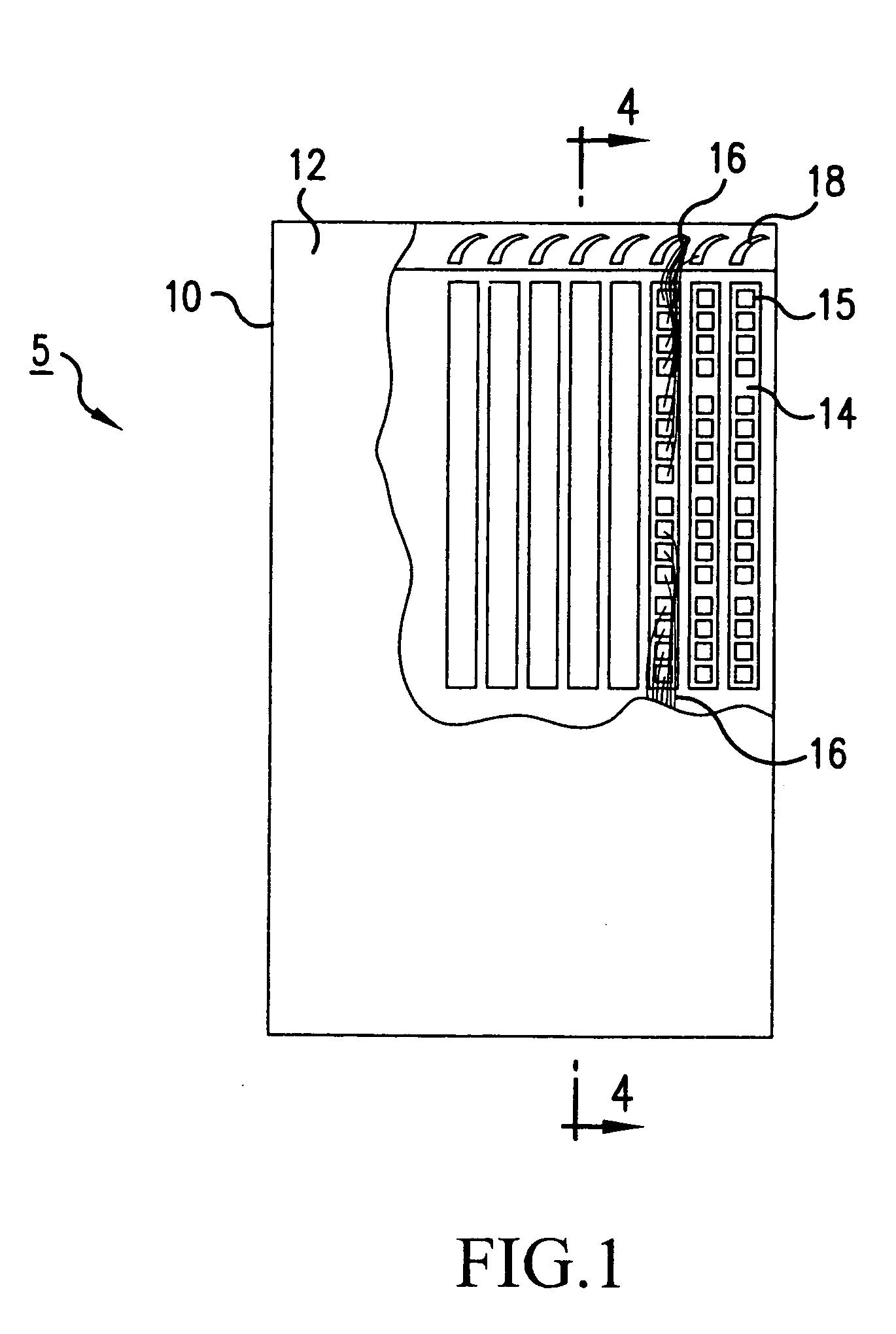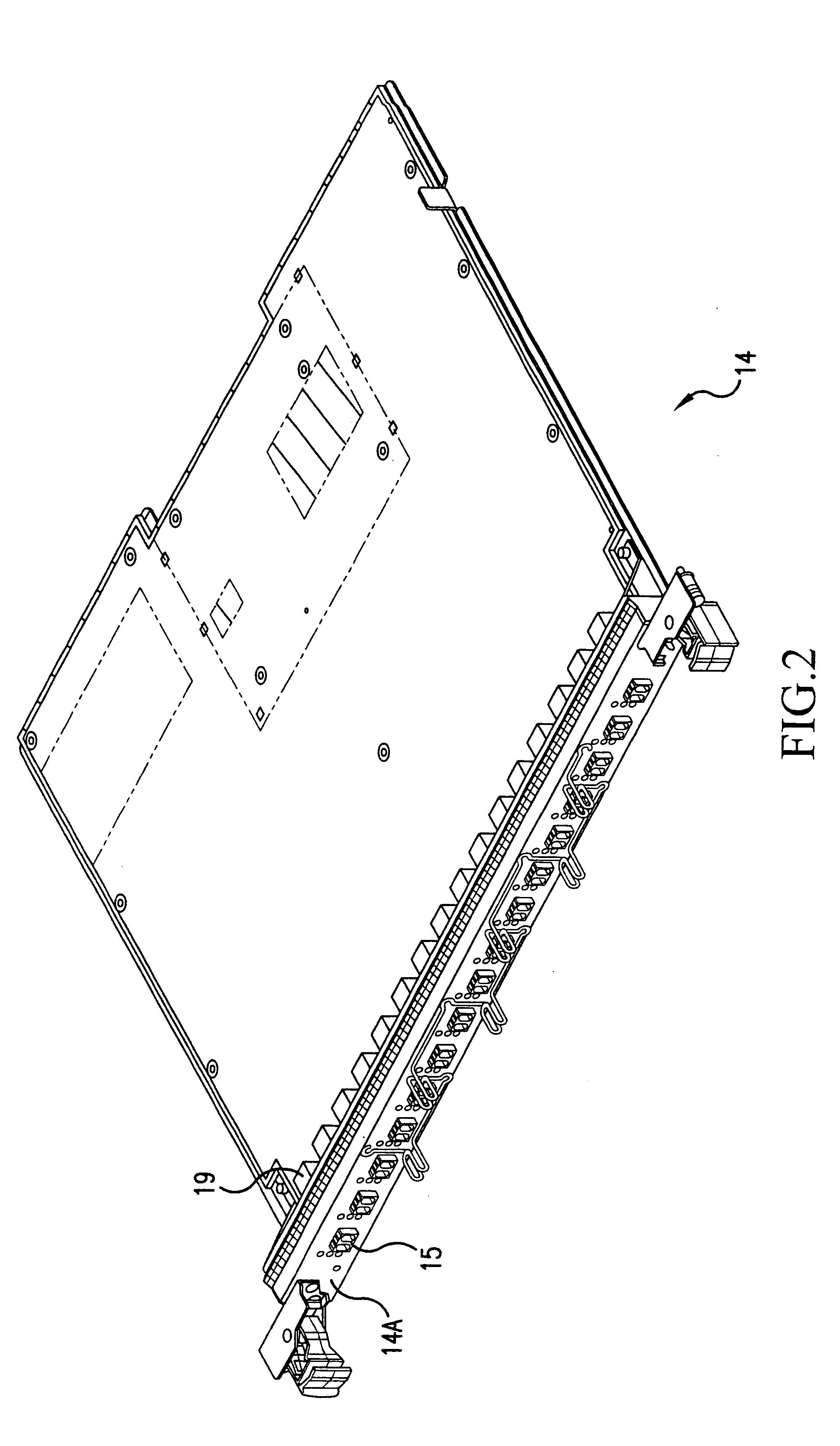Optical fiber management system and method and fiber bender thereof
a management system and optical fiber technology, applied in the field of optical fiber, can solve the problems of increasing the complexity of the modern computer and telecommunications network, the physical size of the connector, and the difficulty of service of the internal connection scheme,
- Summary
- Abstract
- Description
- Claims
- Application Information
AI Technical Summary
Problems solved by technology
Method used
Image
Examples
Embodiment Construction
[0029] Description will now be given of the invention with reference to FIGS. 1-5E. It should be noted that the figures are exemplary in nature and are meant in no way to limit the scope of the invention.
[0030] FIG. 1 depicts a schematic of a typical telecommunications networking device 5 usable in an optical network. Device 5 includes a chassis 10 which has an openable door 12 shown in broken view. Within the chassis is disposed some support structure (not shown) such as shelving, hooks, etc., for supporting a series of circuit boards or line modules 14. Previously, line modules were provided with eight optical transceivers each with their respective optical fibers being mounted internal to the faceplate of the line module (such a device is known as an LM-8). With the advent of the less bulky small form factor transceivers described above, the new standard of line modules is now being provided with sixteen optical transceivers (or an LM-16) in a faceplate mounted external interconn...
PUM
 Login to View More
Login to View More Abstract
Description
Claims
Application Information
 Login to View More
Login to View More - R&D
- Intellectual Property
- Life Sciences
- Materials
- Tech Scout
- Unparalleled Data Quality
- Higher Quality Content
- 60% Fewer Hallucinations
Browse by: Latest US Patents, China's latest patents, Technical Efficacy Thesaurus, Application Domain, Technology Topic, Popular Technical Reports.
© 2025 PatSnap. All rights reserved.Legal|Privacy policy|Modern Slavery Act Transparency Statement|Sitemap|About US| Contact US: help@patsnap.com



